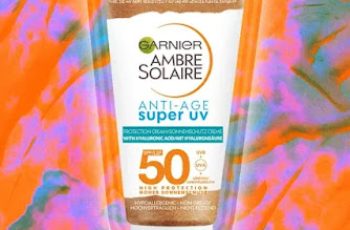
How Often Should You Use Niacinamide?
New day, new vitamin, and what you should incorporate into your daily routine. Today we’re focusing on Vitamin B3, also known as Niacinamide. Luckily for all of us, it’s found in a wide range of skincare products. This versatile ingredient has many impressive benefits that can keep your complexion radiant and at its healthiest.
The question is, despite the benefits of Niacinamide for your skin, how often should you use it? Is it a good thing that you can have too much of, or can you never have enough? Let me take the guesswork out of it and explain how often you should use Niacinamide.
Can Niacinamide be used daily?
Yes, using Niacinamide daily will have a number of benefits for your skin. Here are the skin results you can expect when using it daily.
Oil Regulation
Niacinamide is known to regulate sebum production (natural oils in your skin). Due to its antibacterial effects, it has a calming effect on the skin and can clear clogged pores that often lead to blackheads and other breakouts. It’s gentler on the skin than stronger acne-fighting ingredients like salicylic acid and benzoyl peroxide.
Supports the function of the skin barrier
With its moisturizing properties, Niacinamide has been shown to strengthen the entire skin barrier and maintain the correct water levels to ensure it functions properly. This is particularly beneficial for those who are dehydrated, as it attracts moisture from the surrounding skin area and holds it in place. Fights free radical damage from pollution and UV rays, giving you an all-around radiant complexion.
Fights signs of skin aging
With Niacinamide’s antioxidant and microcirculation-boosting properties, you’ll find that signs of aging such as fine lines, wrinkles, and collagen loss are slowed down as Niacinamide boosts collagen production, leaving skin looking plump, youthful, and radiant.
Reduces signs of hyperpigmentation
Favored by many skin experts and dermatologists, Niacinamide helps maintain skin radiance and reduces melanin production to a minimum, so that dark spots or hyperpigmentation fade and become less noticeable over time.
With results like these, I can’t blame you if you’re excited about the idea of using Niacinamide on a daily basis, but be warned: you can overdo it with this clever moisturizer. More on that in the next section.
Can you use too much niacinamide?
When using high concentrations of niacinamide, it can increase skin sensitivity, leading to irritation and redness. So while it may be tempting to add more moisture to your skin, all skin experts recommend applying the right amount of niacinamide to your skin. The reason too much niacinamide causes your skin to react badly is because the moisturizing properties can draw moisture away not only from your face, but also from the layers below the skin, leading to the opposite effect you get when using niacinamide.
When should I routinely use niacinamide?
You’ll often find niacinamide in water-based products like serums and moisturizers. These products are used later in your skincare routine and work best when used on completely clean skin, as this ensures not only that the niacinamide-rich product is absorbed effectively, but that any other ingredients applied to your skin can work faster and achieve impressive results.
Is too much niacinamide bad for your skin?
As explained earlier, you can get too much of a good thing, especially niacinamide. Applying too much niacinamide to your skin can lead to breakouts and irritation. So follow the directions for use on the product packaging. If you are new to niacinamide, you will need to do a 24-hour patch test before applying it all over your skin. If you have concerns, you should contact your doctor or dermatologist for more information and reassurance.
Should I use niacinamide in the morning or at night?
You can apply niacinamide morning and night. Yes, it is true that it will benefit your skin to varying degrees when you use this hydrating powerhouse twice a day. Its antioxidant properties fight any signs of damage during the day and repair them at night. You will find that any additional products or ingredients you use will be effectively absorbed and show results faster.
The only problem you may encounter is that niacinamide does not work well with the popular skincare ingredient vitamin C. Both ingredients contain a lot of antioxidants and when used together they compete with each other, making them useless for the skin. If you want to use both in your daily routine, it is best to use vitamin C in the morning and niacinamide in the evening for the best results. If you want to learn more, read our blog post on using niacinamide and vitamin C.
How long does it take for niacinamide to work?
As with all skincare products, consistency is key to achieving visible results, and the benefits of this powerful ingredient depend on how often you use it. If you stick to a good routine and use it twice a day, you’ll reportedly see a significant improvement in signs of hyperpigmentation, with a plumper, more youthful-looking complexion in about 8-12 weeks.
Can Niacinamide be used without sunscreen?
Some studies have shown that Niacinamide can protect the skin from excessive damage caused by overexposure to the sun’s UV rays. However, all the effort and time you put into your skincare routine will go to waste if you don’t apply SPF 30 or higher sunscreen every day. To prevent sun damage, always protect your skin with sunscreen, even on days when your skin looks dull.
I hope this has cleared up any confusion you may have had and that you now have a better understanding of how often you should use Niacinamide. If you have any questions, don’t forget to find me on the Procoal Instagram account and if you’re really into skin, don’t miss the latest episode of The Green Sofa.


